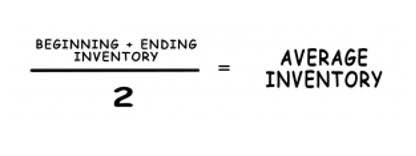
The financial reporting segment takes the same data from revenue management and compiles reports instantly for quick review. Under the financial management segment, you can make intercompany entries and manage workflows and content management. It allows adjustments to be made easily and can provide month-end and year-end reporting quickly.
Cost
In his free time, you’ll find Jason on the basketball court, travelling, and spending quality time with family. Project management is one of the most essential parts of running a construction business. So it only makes sense to consider this task when choosing a software option for you.
Unit Price Contracts

This is an informational form that must be submitted to the IRS in order to report non-salary income. You should contact your client again if they fail to provide you a Form 1099-MISC. The prices of the materials, tools, and labor are often driven by factors right outside your control. Our connected global construction platform unites all stakeholders on a project with unlimited access to support and a business model designed for the construction industry. Use our calculators to estimate the cost of construction materials for your next project. Importantly, the income sheet’s view of profit must match the change in equity reflected on the balance sheet.
- Similarly, construction companies have to be careful not to overpay unemployment tax.
- To record a construction cost, debit the construction in the process column and credit the cash column.
- Moreover, businesses that don’t use an accounting professional are less likely to report strong financial health or believe they could pass a financial audit.
- Gain instant, AI-driven insights into all project expenses within your accounting system, enabling better financial control through Fyle’s CoPilot.
- Once the retained funds are due to be released, the amounts are transferred to accounts receivable or payable.
- As an independent contractor, hiring a professional to handle your bookkeeping needs will give you the freedom you need to expand your company.
- Construction accounting software performs project accounting specifically developed for construction projects.
How do construction companies implement job costing?
Better record keeping via time tracking, material costs, change orders, and subcontractor contracts can also lead to a better ROI. Better insight provides a more complete view of operational plans and expectations. If a project is not performing up to standards, you can find out in real time before it affects profits or incurs a loss. INTERAC supports various billing formats, including AIA, T&M, free form, and contract billing, integrated into modules spanning both accounting and income summary construction management. Last, it has extensive payroll features, supporting multi-state, multi-locality, prevailing wage, certifications, union contributions, and worker’s comp calculations. QuickBooks invoicing for construction gives you the flexibility to get paid anyway you want.


Quick Ratio measures if a company can pay its current liabilities with cash bookkeeping for contractors or other assets that can be converted to cash. Construction payroll deals with complexities that other industries don’t normally have to worry about, like prevailing wage, union payroll, and multi-state-multi-city payroll requirements. Larger businesses and those who maintain inventory must use an accrual basis of accounting to comply with U.S GAAP (Generally Accepted Accounting Principles).
- As each project progresses, the business must estimate the percentage of total work completed.
- On the construction side of things, the individuals doing this type of work include construction bookkeepers or construction accountants — or, more generally, bookkeeping professionals.
- This ensures that field workers don’t have to go to the back office with a shoebox full of receipts.
- It can also organize and pay bills for you, as well as collect payments and follow up on outstanding invoices.
- All employee taxable income is documented on a W-2 form and reported to the IRS each year.
- The American Institute of Architects (AIA) method is generally used for commercial and government-funded construction projects.
A chart of accounts is a list of all the accounts used by a company to record financial transactions. This lets them track transactions that impact the whole company’s financial picture. However, because construction accounting is project-centered and production is de-centralized, contractors also need a way to track and report transactions specific to each job. Working with a contractor bookkeeper can be a game-changer for contractors, offering a tailored financial ally in the hustle and bustle of project management. Firstly, a skilled bookkeeping for contractors pro understands the unique financial challenges that contractors face.
DIY Bookkeeping & Accounting or Professional Services?
A construction accounting software will have the same features as a general accounting software but then include industry-specific modules for construction. Acumatica’s payroll solution is fairly flexible, catering to requirements like multiple unions, classes, complex wages, and benefits packages. Additionally, the software also provides tools for creating and tracking subcontract status, purchase orders, and budget comparisons. This helps automate project commitments and change order processes, helping to control cost overruns. The project management module also offers effective resource tracking tools to balance workloads and optimize labor costs.
This is primarily driven by the volatile prices of labor and raw materials, which can significantly change throughout the project’s extended duration. Additionally, the difficulty in stockpiling building materials in advance further intensifies this vulnerability for contractors. The Record Keeping for Small Business main difference between construction accounting and general accounting is that construction accounting is project-based. Project-based accounting focuses on transactions that are specific to that project. It allows construction firms to assess the financial implications of completing certain projects and plan their completion while meeting contractual parameters. Like any other industry, accurate and efficient accounting is also vital for success in construction.

We looked at a total of 22 different metrics across five separate categories to reach our conclusion. Here are some of the categories we used to rank the providers that made the top of the list. The revenue management component manages owner contracts, invoicing, cash receipts and projections.